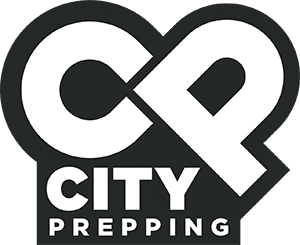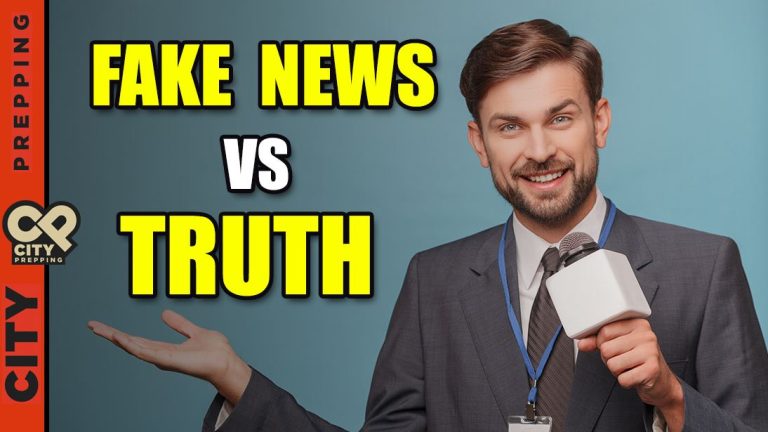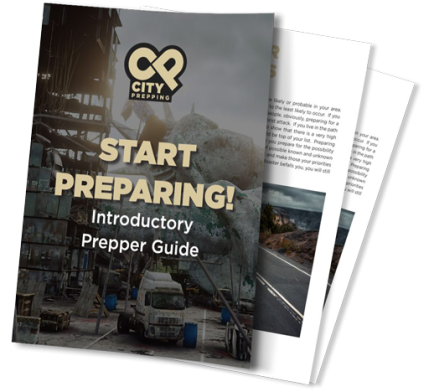 We have a truth problem in the world today, and it is multifaceted. There are multiple versions of truth and a plethora of voices espousing the one real truth. We tend to think of truth as tied and rooted in fact, but that’s not always the case. Sometimes truth is solely tied to belief and only loosely attached to empirical fact. We have seen in recent years enough truth that has been embraced that has turned out to be later either intentional or unintentional falsehoods that a term for it was created in 2013– Infodemic. This term originated around the SARS outbreak in 2003, so it isn’t surprising that it resurfaced with COVID-19 in 2020.
Infodemic is a portmanteau, a fancy way of saying it is a word blending the sounds and combining two others’ meanings. Here the two words are information and epidemic. This is apropos because we have a globally spreading amount of information, and enough of it is so detached from fact either by intention or lack of proper scrutiny that it only serves to sicken the real truth at an epidemic level.
Many believe that truth is rooted in fact, but a fact is based on empirical research and quantifiable measures. That requires tremendous attention and scrutiny. The majority of people lack the time or sometimes the faculty to pick apart a premise, thesis, or statement to discern the true facts. Plus, that’s hard. It’s much easier for the masses to adopt an opinion as truth and then attack any pieces of contrary truth that would unperch that assumed truth from the center point of their thinking. There’s no lack of opinion either. Go to any website, any news source, any mainstream news outlet, any alternative news outlet, and you will find people with unyielding opinions about precisely what it is you see or read. “Look no further,” they may as well claim because if you do try to look elsewhere or question their vision of truth, you will be told by them you just don’t understand or, worse yet, that you are weak-minded, an idiot, or worse. You can see this every day in the name-calling, terms of innuendo, and other ad hominem attacks anyone uses to attempt to discredit the opponents to their espoused viewpoint. Most people want to be informed, but they also have no desire to be drawn into a heated conflict about the actual underlying facts. So let’s take a look at a few of the key strategies for determining truth. That is why you are here, after all. You don’t want to be duped or lied to, but you also don’t want to have to do hours of tedious research just to understand and uncover the simple truth. So, what are the indicators you might not be getting the truth?
The Credibility of Sources
We have a truth problem in the world today, and it is multifaceted. There are multiple versions of truth and a plethora of voices espousing the one real truth. We tend to think of truth as tied and rooted in fact, but that’s not always the case. Sometimes truth is solely tied to belief and only loosely attached to empirical fact. We have seen in recent years enough truth that has been embraced that has turned out to be later either intentional or unintentional falsehoods that a term for it was created in 2013– Infodemic. This term originated around the SARS outbreak in 2003, so it isn’t surprising that it resurfaced with COVID-19 in 2020.
Infodemic is a portmanteau, a fancy way of saying it is a word blending the sounds and combining two others’ meanings. Here the two words are information and epidemic. This is apropos because we have a globally spreading amount of information, and enough of it is so detached from fact either by intention or lack of proper scrutiny that it only serves to sicken the real truth at an epidemic level.
Many believe that truth is rooted in fact, but a fact is based on empirical research and quantifiable measures. That requires tremendous attention and scrutiny. The majority of people lack the time or sometimes the faculty to pick apart a premise, thesis, or statement to discern the true facts. Plus, that’s hard. It’s much easier for the masses to adopt an opinion as truth and then attack any pieces of contrary truth that would unperch that assumed truth from the center point of their thinking. There’s no lack of opinion either. Go to any website, any news source, any mainstream news outlet, any alternative news outlet, and you will find people with unyielding opinions about precisely what it is you see or read. “Look no further,” they may as well claim because if you do try to look elsewhere or question their vision of truth, you will be told by them you just don’t understand or, worse yet, that you are weak-minded, an idiot, or worse. You can see this every day in the name-calling, terms of innuendo, and other ad hominem attacks anyone uses to attempt to discredit the opponents to their espoused viewpoint. Most people want to be informed, but they also have no desire to be drawn into a heated conflict about the actual underlying facts. So let’s take a look at a few of the key strategies for determining truth. That is why you are here, after all. You don’t want to be duped or lied to, but you also don’t want to have to do hours of tedious research just to understand and uncover the simple truth. So, what are the indicators you might not be getting the truth?
The Credibility of Sources
 Source credibility is one of the easiest ways to determine if you are getting the straight dope or the true information, and there are a few ways to discern a source’s credibility. The first is to ask yourself if the source has a tradition of inherent bias. Does the source or person frequently take a stance that is sensational to drive up ratings and profits? Are they known for their extreme viewpoint? While this may not mean they are outright lying to you, it is an indicator that they are shading the truth. They offer their interpretation for profit, and the more extreme their view, the more audience they can attract. The more audience they attract, the more money they make. At some point, the source may be less interested in the real truth and may even convince themselves through a rising audience that they are still offering the unbiased truth and their bank account is the proof.
Another evaluation of a source’s credibility can be found in the words they use when addressing the opposition. The hierarchy of disagreement is a pyramid representation of the levels of an argument. The lower you are on the pyramid, the weaker your argument probably is. The lower you are on the pyramid, the more likely you will not have substantiating facts to the premises you espouse. I won’t go into too much of the model because there isn’t enough time to detail and example each level of the pyramid. Still, it’s essential to understand the model and begin to apply it to the sources from which we get our information. At the lowest level of disagreement, you have simple name-calling. If you have ever heard the term Demoncrat or Repugnican, you have listened to name-calling. Name-calling tries to dismiss any opposing viewpoint by diminishing or dehumanizing the opposition.
The next level up but probably just as weak of a counter-argument is ad hominem attacks or character attacks. If you have ever heard the term “evil” democrat or “RINO,” Republican in Name Only, you’ve listened to an ad hominem attack. An ad hominem attempts to discredit opposing viewpoints by attacking the character of the opposition. Saying someone is “against God” or on the “wrong side of history” are character attacks. When I say they are out of context here, you can probably associate them back to the argument that was perhaps discussed initially. Still, you can’t link them to any specific point of that argument. Name-calling and ad hominem attacks are smokescreens for the uninformed or the cunning Machiavellian.
As you go up the pyramid, you get to more robust forms of disagreement, and I know you have heard these as well. Next is responding to tone, as in “I don’t like the way you said this” or “You don’t need to get angry about that.” This level criticizes the tone but ignores the substance of the argument.
Most people you will meet never rise too high above the first three levels. Often this is because they cannot express or grasp more complex arguments and truths. So, it is at these lower three levels where many decisions are made. It’s at these lower three levels where most of the truth is determined, adopted, and adhered to. But what are the four levels of disagreement above this level?
The first is contradiction. This is where a real opposing case is offered, even if it has little or no supporting evidence. Then, there is a counterargument, where a source contradicts an existing argument, backs up the stance with facts, reasoning, and supporting evidence. Then there is the refutation level, where the source finds errors in the opposing argument and explains why the opposing viewpoint is wrong. At the highest level is refuting the central point. This is where the whole argument is distilled down, examined from both sides, and refuted with supporting facts and details. This highest level of disagreement is primarily free from bias and any attacks on any other viewpoint or adherent to any other view. In fact, this highest level honestly considers different perspectives and gently explains why they are in error.
That’s so much to take in and process, I know. So I will try and distill this down a little bit for you. Listen to the words you hear or read them carefully. Ask yourself, is this source trying to convince me of something? Are they attacking someone or establishing some facts? Are those facts supported rationally? The truth is that if you ask any rhetorician, they will tell you all writing and all locution is intended to persuade.
Assuming this is true, the final trick I will tell you to help you consider a source’s trustworthiness is applying Aristotle’s Rhetorical Triangle. It sounds like another big heady thing, but I assure you it’s probably more accessible and easier to understand. All argument or persuasive speech or writing can be broken into three types of argument: Logos, Ethos, Pathos. How well a source navigates and uses the Rhetorical Triangle will determine the speaker or writer’s ability to persuade an audience. Logos is logic or the straight presentation of facts or reasoning. It’s free from opinion, and it’s well supported or meticulously outlined. Logos is an appeal to a listener or reader’s reasoning capabilities. Is credible evidence presented?
The second point of the pyramid is Ethos or ethical appeals. This is where the announcer reads off the source’s credits and experience, or the source establishes their own credibility to speak on the subject. Declaring oneself a patriot seeks to establish oneself as such while also trying to cast anyone in opposition as not a patriot. It can be more subtle. You may recall that I earlier in this video stated, “I will be honest by saying I had to delve into history and philosophy to provide for you the clearest means to decipher the truth, and I consulted a few experts I know who have taught Rhetoric and were steeped in the Aristotelian philosophical tradition.” While that is a fact, and I am not trying to fool you or deceive you in any way, it is an example of ethos. I say, “I will be honest,” which tells you I am both trying to be truthful and sincere. I tell you that I consulted with experts, which establishes credibility that I took the time and spoke to the pros to give you the correct information. So, while ethos can be used to establish credibility through deception or the assumption of solidarity or comprehension, it is often used to honestly express the source’s sincerity of intent, depth of study, or solidarity with the reader or listener, as in “I’m a person just like you.”
The third type of Aristotle’s Rhetorical Triangle is pathos. It is often considered the weakest form of argument, but that’s probably not true if you consider the outcomes. Pathos is an appeal to the listener or reader’s emotions. Have you ever been moved to tears by something you read or heard? Have you ever been driven to anger by something you heard or read? That was pathos at play. When a person asks you to put yourself in the shoes of another or imagine how someone must feel or how they feel or their experience, they use pathos. You can see how that can be used for good and evil. Pathos has incited mobs, and it has elicited compassion. It’s a powerful tool, so long as the wielder is also considered to have logos or logic and ethos or a shared identity with the audience.
When considering if a source is credible and providing you with the truth, consider what they are saying. Consider the words of their mouth. Consider what level of the pyramid of argument from which they are articulating their points. Consider whether they are arguing or taking a stance out of ethos, logos, or pathos. Consider the source to find the truth. That’s the first trick to determining the truth.
Ten Quick Tests for Truth
The remaining tricks for determining truth are probably a little easier to wrap your head around. Recognizing source bias tends to occur in real-time. It’s a determination of whether you are getting played or you are hearing the truth that you make while you are actively reading or listening. These other tricks can be done after the fact and to a greater extent. I will also present these in rapid sequence and not as in-depth as the heady discussion earlier. If you have some information presented as facts and you want to determine if it’s truth, run these tests on it.
Source credibility is one of the easiest ways to determine if you are getting the straight dope or the true information, and there are a few ways to discern a source’s credibility. The first is to ask yourself if the source has a tradition of inherent bias. Does the source or person frequently take a stance that is sensational to drive up ratings and profits? Are they known for their extreme viewpoint? While this may not mean they are outright lying to you, it is an indicator that they are shading the truth. They offer their interpretation for profit, and the more extreme their view, the more audience they can attract. The more audience they attract, the more money they make. At some point, the source may be less interested in the real truth and may even convince themselves through a rising audience that they are still offering the unbiased truth and their bank account is the proof.
Another evaluation of a source’s credibility can be found in the words they use when addressing the opposition. The hierarchy of disagreement is a pyramid representation of the levels of an argument. The lower you are on the pyramid, the weaker your argument probably is. The lower you are on the pyramid, the more likely you will not have substantiating facts to the premises you espouse. I won’t go into too much of the model because there isn’t enough time to detail and example each level of the pyramid. Still, it’s essential to understand the model and begin to apply it to the sources from which we get our information. At the lowest level of disagreement, you have simple name-calling. If you have ever heard the term Demoncrat or Repugnican, you have listened to name-calling. Name-calling tries to dismiss any opposing viewpoint by diminishing or dehumanizing the opposition.
The next level up but probably just as weak of a counter-argument is ad hominem attacks or character attacks. If you have ever heard the term “evil” democrat or “RINO,” Republican in Name Only, you’ve listened to an ad hominem attack. An ad hominem attempts to discredit opposing viewpoints by attacking the character of the opposition. Saying someone is “against God” or on the “wrong side of history” are character attacks. When I say they are out of context here, you can probably associate them back to the argument that was perhaps discussed initially. Still, you can’t link them to any specific point of that argument. Name-calling and ad hominem attacks are smokescreens for the uninformed or the cunning Machiavellian.
As you go up the pyramid, you get to more robust forms of disagreement, and I know you have heard these as well. Next is responding to tone, as in “I don’t like the way you said this” or “You don’t need to get angry about that.” This level criticizes the tone but ignores the substance of the argument.
Most people you will meet never rise too high above the first three levels. Often this is because they cannot express or grasp more complex arguments and truths. So, it is at these lower three levels where many decisions are made. It’s at these lower three levels where most of the truth is determined, adopted, and adhered to. But what are the four levels of disagreement above this level?
The first is contradiction. This is where a real opposing case is offered, even if it has little or no supporting evidence. Then, there is a counterargument, where a source contradicts an existing argument, backs up the stance with facts, reasoning, and supporting evidence. Then there is the refutation level, where the source finds errors in the opposing argument and explains why the opposing viewpoint is wrong. At the highest level is refuting the central point. This is where the whole argument is distilled down, examined from both sides, and refuted with supporting facts and details. This highest level of disagreement is primarily free from bias and any attacks on any other viewpoint or adherent to any other view. In fact, this highest level honestly considers different perspectives and gently explains why they are in error.
That’s so much to take in and process, I know. So I will try and distill this down a little bit for you. Listen to the words you hear or read them carefully. Ask yourself, is this source trying to convince me of something? Are they attacking someone or establishing some facts? Are those facts supported rationally? The truth is that if you ask any rhetorician, they will tell you all writing and all locution is intended to persuade.
Assuming this is true, the final trick I will tell you to help you consider a source’s trustworthiness is applying Aristotle’s Rhetorical Triangle. It sounds like another big heady thing, but I assure you it’s probably more accessible and easier to understand. All argument or persuasive speech or writing can be broken into three types of argument: Logos, Ethos, Pathos. How well a source navigates and uses the Rhetorical Triangle will determine the speaker or writer’s ability to persuade an audience. Logos is logic or the straight presentation of facts or reasoning. It’s free from opinion, and it’s well supported or meticulously outlined. Logos is an appeal to a listener or reader’s reasoning capabilities. Is credible evidence presented?
The second point of the pyramid is Ethos or ethical appeals. This is where the announcer reads off the source’s credits and experience, or the source establishes their own credibility to speak on the subject. Declaring oneself a patriot seeks to establish oneself as such while also trying to cast anyone in opposition as not a patriot. It can be more subtle. You may recall that I earlier in this video stated, “I will be honest by saying I had to delve into history and philosophy to provide for you the clearest means to decipher the truth, and I consulted a few experts I know who have taught Rhetoric and were steeped in the Aristotelian philosophical tradition.” While that is a fact, and I am not trying to fool you or deceive you in any way, it is an example of ethos. I say, “I will be honest,” which tells you I am both trying to be truthful and sincere. I tell you that I consulted with experts, which establishes credibility that I took the time and spoke to the pros to give you the correct information. So, while ethos can be used to establish credibility through deception or the assumption of solidarity or comprehension, it is often used to honestly express the source’s sincerity of intent, depth of study, or solidarity with the reader or listener, as in “I’m a person just like you.”
The third type of Aristotle’s Rhetorical Triangle is pathos. It is often considered the weakest form of argument, but that’s probably not true if you consider the outcomes. Pathos is an appeal to the listener or reader’s emotions. Have you ever been moved to tears by something you read or heard? Have you ever been driven to anger by something you heard or read? That was pathos at play. When a person asks you to put yourself in the shoes of another or imagine how someone must feel or how they feel or their experience, they use pathos. You can see how that can be used for good and evil. Pathos has incited mobs, and it has elicited compassion. It’s a powerful tool, so long as the wielder is also considered to have logos or logic and ethos or a shared identity with the audience.
When considering if a source is credible and providing you with the truth, consider what they are saying. Consider the words of their mouth. Consider what level of the pyramid of argument from which they are articulating their points. Consider whether they are arguing or taking a stance out of ethos, logos, or pathos. Consider the source to find the truth. That’s the first trick to determining the truth.
Ten Quick Tests for Truth
The remaining tricks for determining truth are probably a little easier to wrap your head around. Recognizing source bias tends to occur in real-time. It’s a determination of whether you are getting played or you are hearing the truth that you make while you are actively reading or listening. These other tricks can be done after the fact and to a greater extent. I will also present these in rapid sequence and not as in-depth as the heady discussion earlier. If you have some information presented as facts and you want to determine if it’s truth, run these tests on it.






